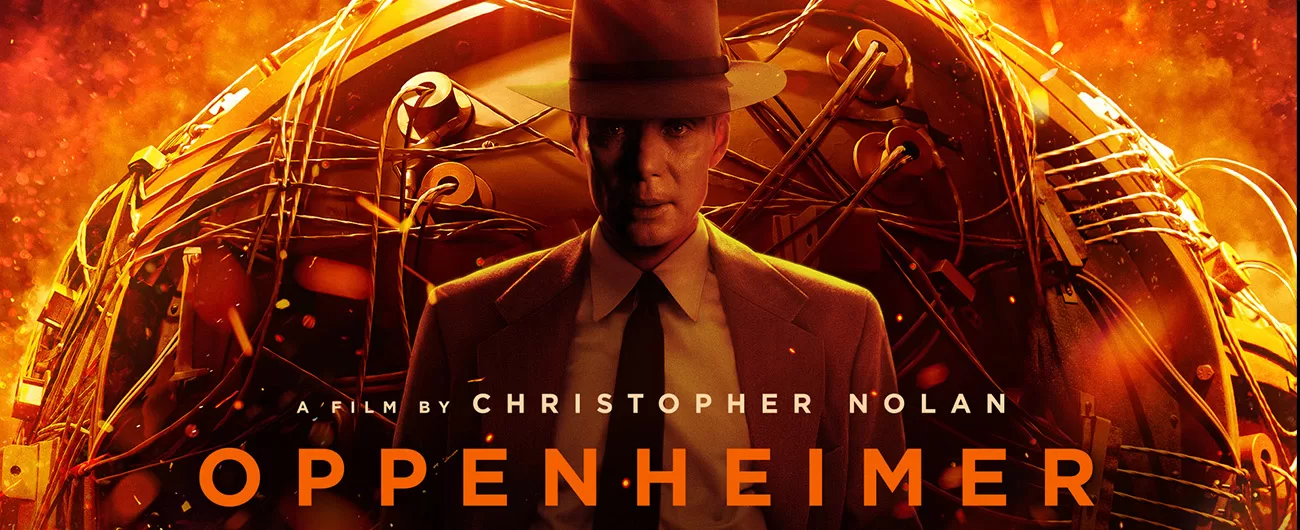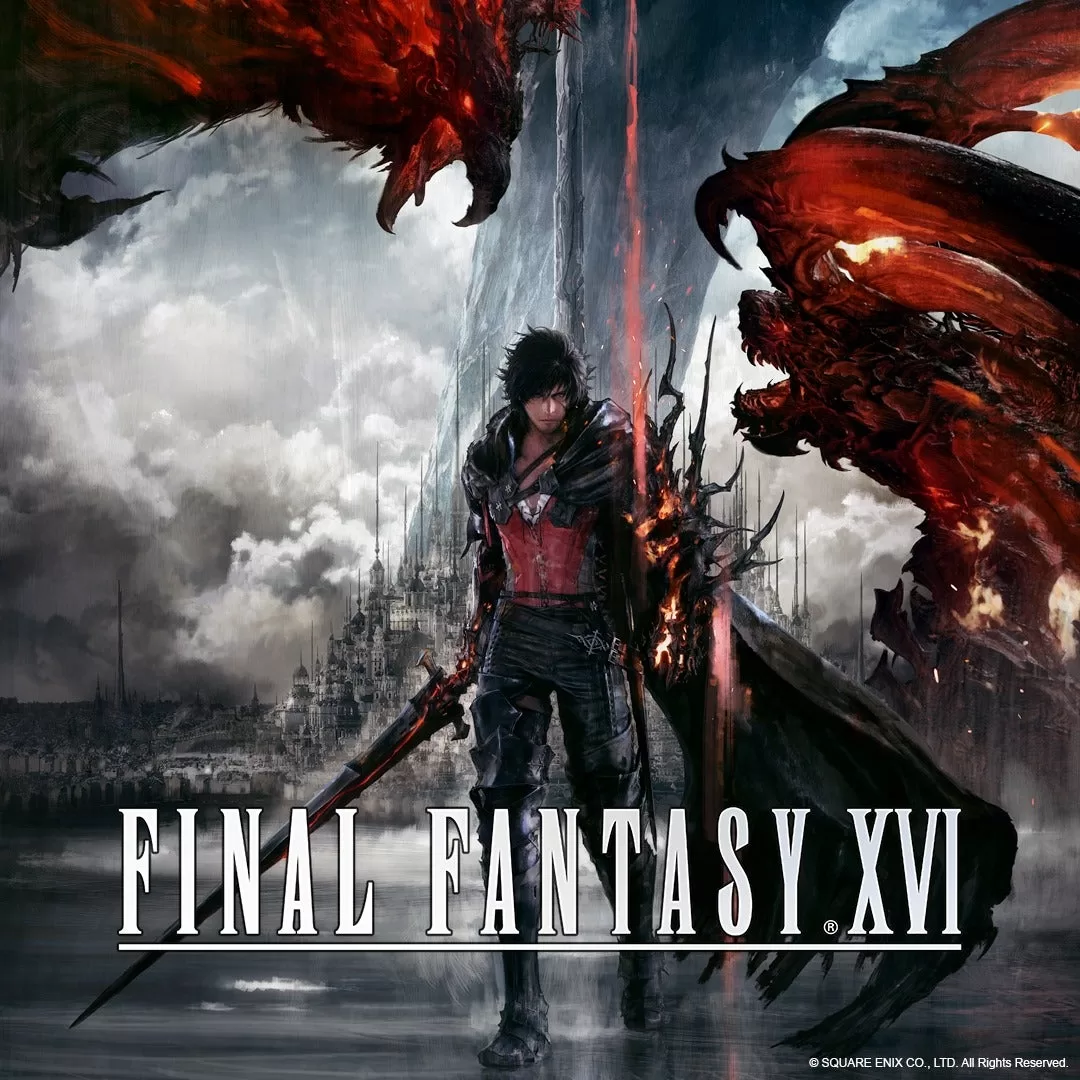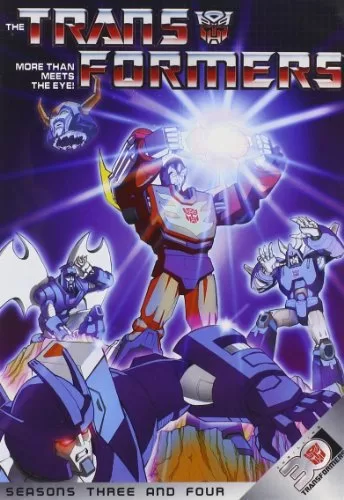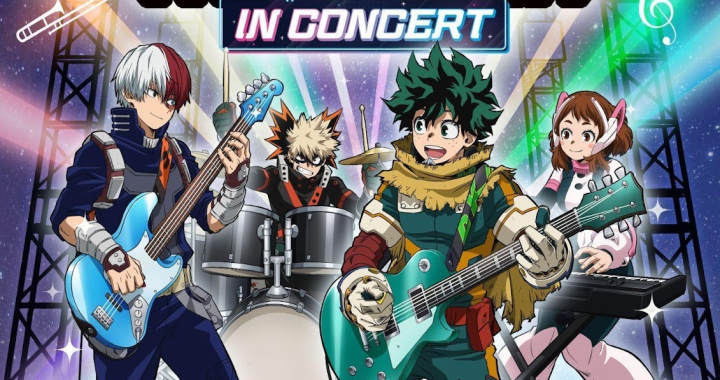
A Newcomer’s Guide To… Superhero Comics
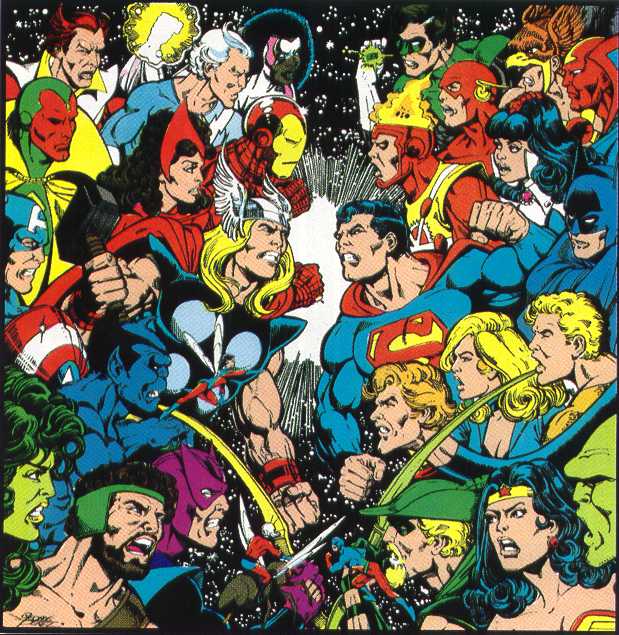
Comic books can be a challenging world to break into, especially if you aren’t familiar with the nuances of comic book culture. Most of the most iconic and well-known superhero characters have existed for 60-80 years of publication. Even more recent characters who have reached iconic status don’t have simple access points into those books. Even Deadpool has been in publication for nearly three decades as of this writing. That’s leaving out the constant reboots, retcons, and other changes that can confuse people. All this can make finding a way into the world of superhero comics fairly daunting for a new reader.
Fortunately, there isn’t a single way into superhero comics, and there are many perfectly valid ways into the hobby. The options I will outline in this guide are by no means the only ways to do it. If you’re interested in jumping in with a complex book like Watchmen, and that interests you enough to seek out other books like it, that’s completely reasonable. While I would not recommend that for someone coming in completely cold, if it works for you, then it’s the right way in. This guide intends only to offer suggestions that may interest you, depending on your tastes.
For our purposes, this Newcomer’s Guide will be structured as a Top Ten list. In other words, this will be my Top Ten suggestions for superhero comics to start with. These choices are designed to be as accessible as possible, and what I think represent the most enduring takes on the characters in question. My focus is to find good entry points to well-known superhero characters that mainstream audiences would at least know from television or film versions, keeping a focus on Marvel and DC titles.
My priorities with these choices is selecting books that:
– are relatively if not entirely self-contained. I include only one long ongoing run on this list, and the rest are either mini-series, short runs, or maxi-series. That one long run was chosen because everything you need to know can be found within the series itself.
– require little to no outside reading. Most of these selections offer a clear beginning, middle, and end, with everything complete in itself.
– that offer a good introduction to the characters. This includes character-defining arcs or stories that capture the essence of the character’s appeal.
– that are well-crafted in story and art. This is the most important thing, in my view.
If you disagree with any of these selections, that’s perfectly fine. I’m aware that tastes are subjective, especially when talking about Big Two superhero titles. I’m making my recommendations based on my own personal tastes as a long-time fan of superhero comics, and what I think might work for most people. If any of these choices don’t appeal to you, you can try one of the other titles on the list. Or you can just try something that looks appeals more to your own tastes. Again, there’s no right or wrong way into superhero comics, just the one that works best for you.
Also, none of these suggestions are meant to be definitive guides to any specific characters. At some point, I may do Newcomer’s Guides to specific characters or titles if there’s enough interest, especially for more complex franchises like the Avengers or the X-Men. What I’m offering presently are the most accessible starting points to reading about some of the more iconic characters. Moreover, all these selections will feature characters that should be familiar to new comics fans.
With that out of the way, let’s begin.
The Caveats
Before I go into my suggestions for what books you should try, let me address some possible misconceptions and other issues. Make no mistake, this is the best time ever in terms of the exposure of superhero films and TV. Everyone knows who the primary Marvel heroes now, and that wasn’t true at one time. That said, if you’re coming in as fans of those shows and films, you may be taken aback by some very noticeable differences you may find in the comics. Sometimes bad takes on classic characters have spread as a result of basing a take solely on the TV or film versions, without understanding the context within the source material. Some of these misconceptions are often so far off that it leads to drastic misinterpretations of classic characters.
The takeaway from this is that if you’re familiar with Marvel and DC adaptations, and you want to read the comics those productions are based on, expect some significant differences. Some of them will be differences in plot or story, while others will completely alter characters. Some characters will look different than you might expect (usually as a result of Hollywood making arbitrary character changes), and others will have different personalities from their comic book counterparts. Some characters or franchises may even be drastically reinvented by Hollywood—the classic Guardians of the Galaxy from the comics have little in common with their film counterparts. Just be aware that the comics are the source material, and that those versions will best represent the visions of the characters’ original creators. I leave it to you as the audience to decide which versions you best prefer.
With all that out of the way, I’ll discuss my recommendations for the best superhero comics to begin your reading journey.
- New Teen Titans Vol. 1 (Marv Wolfman/George Perez)
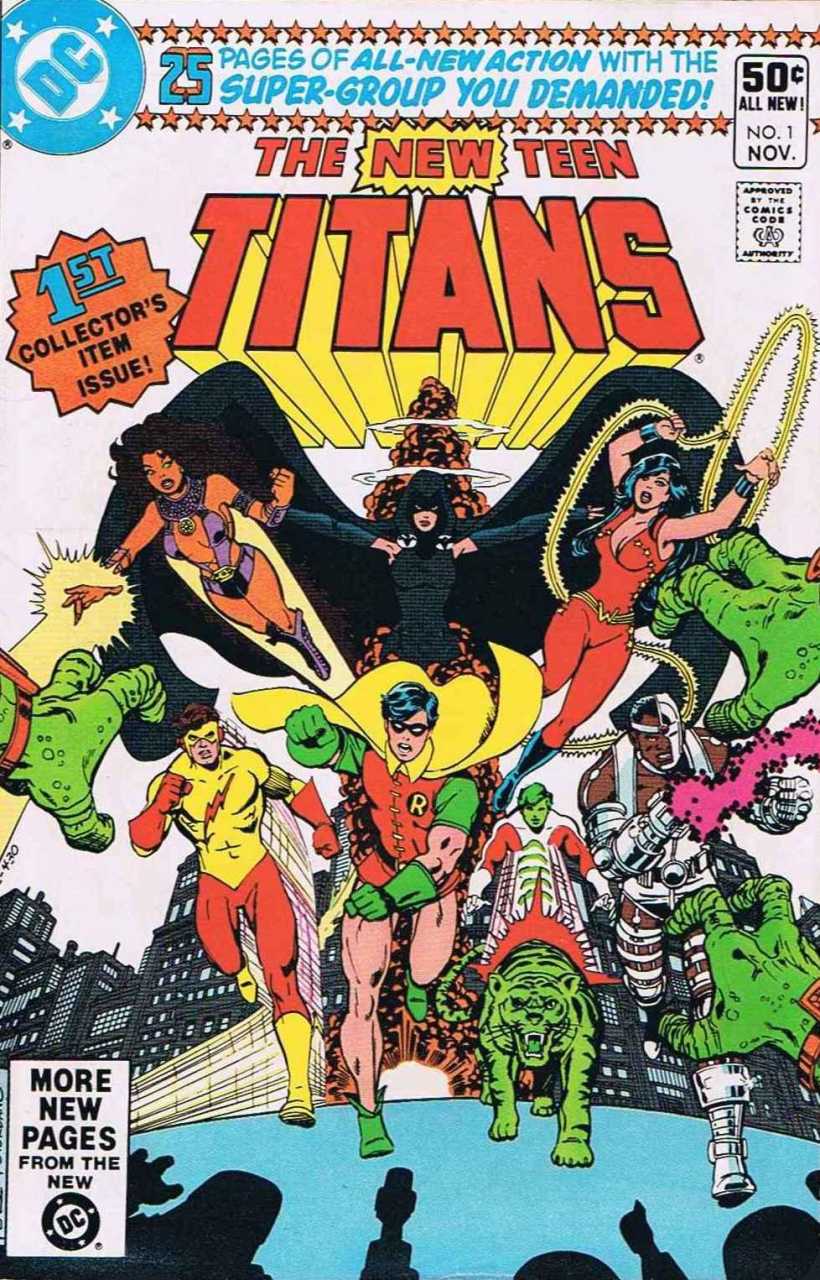
The Teen Titans is a group that many people know from various television and animated series. It’s quite possible that, if you’re a new reader, you will know of Cyborg from Justice League or Doom Patrol; he was a Titan long before that. Other characters from the Titans will be much more recognizable to a newcomer, especially Dick Grayson, the original Robin, who went on to become Nightwing. The New Teen Titans comic is where all of this began, and it is still the greatest take on this team.
This is a case where the best place to start is at the beginning. There had been Teen Titans comics before this, but they exploded with New Teen Titans in the early 1980’s. You do not need to know anything about what happened in those earlier stories; New Teen Titans does not reference them. All you need to know is that the Teen Titans are a group of young heroes who have banded together. Some of them began as teen sidekicks, mainly Robin (Dick Grayson), Kid Flash (Wally West), and Wonder Girl (Donna Troy). Others were introduced in this series and became mainstays, especially Starfire, Cyborg, and Raven. Changeling (who most readers today probably know best as Beast Boy) was a member of the Doom Patrol who was brought into the ranks of the Titans. These seven characters are the most iconic lineup of the team outside of possibly the original group, and they are probably the most enduring incarnation of the team. The first volume establishes how they come together and why they are a team, and the characterization only builds from there.
Another reason that New Teen Titans is the best place to begin with the Titans is that this book introduces many of their major antagonists. Deathstroke makes his first appearance in the second issue of this run, and you’ll see how the Wilson family fell apart if you stick with the series. This book also introduces other major villains in the Titans’ extensive rogues gallery, including The Fearsome Five, the HIVE, and Trigon the Terrible. The early volumes of New Teen Titans establish those rivalries, the beginning of the Titans’ battles with these villains, and why they are enduring.
New Teen Titans is a book that packs a lot of story in a short amount of space, but the pacing moves briskly. At the same time, there is long-term character development in this book, and the book will reward your patience if you stick with it. This book sets the stage for Dick Grayson to become Nightwing, and starts Wally West on the road to becoming the Flash in later years. This book provides triumph as well as tragedy, but the characterization is so good that it remains engaging through the fifty issues that Wolfman and Perez were the main creative team.
George Perez is an outstanding artist on anything he’s on, including titles like Wonder Woman, Avengers, and many others. His sense of detail is like no other artist in the medium, and there is virtually nothing he isn’t able to draw effectively. There is dynamism in body language and expression in every frame, every panel has motion and impact, and each character looks distinctive in this title. New Teen Titans is relatively early work by Perez standards, but this was the book where he came into his own as an artist. He also designed iconic characters like Deathstroke, and he has a unique ability to fit numerous characters into a page without sacrificing any of them.
There are a few points of note, however. New Teen Titans begins in Pre-Crisis continuity, though the general flow of these issues generally holds up even with all the reboots since then. The stories are so enduring that they’ve stood the test of time. You may also find, if you’ve started with the adaptations, that some of the characters in New Teen Titans may seem different. Raven especially has been changed because of DC’s attempts to force-fit her to suit her Hollywood adaptations; this is regrettable, as she is far more interesting under Wolfman and Perez’s guiding hands. Just keep in mind that New Teen Titans show the characters as originally intended, and that any changes are the result of Hollywood’s changes and DC trying to capitalize on outside brand recognition. But these comics will always be the best take on these characters, perhaps for all time.
If you want to see the magic of comics, with great characters at their absolute best, read New Teen Titans. Wolfman tends to cram in a fair amount of text, but the journey he takes the Titans on is some of the best work ever done with teen heroes. It’s a very rare long run that requires absolutely no outside reading at all to fully grasp what’s happening between its pages, but New Teen Titans manages it.
- Wonder Woman: The Hiketeia (Greg Rucka/J.G. Jones)
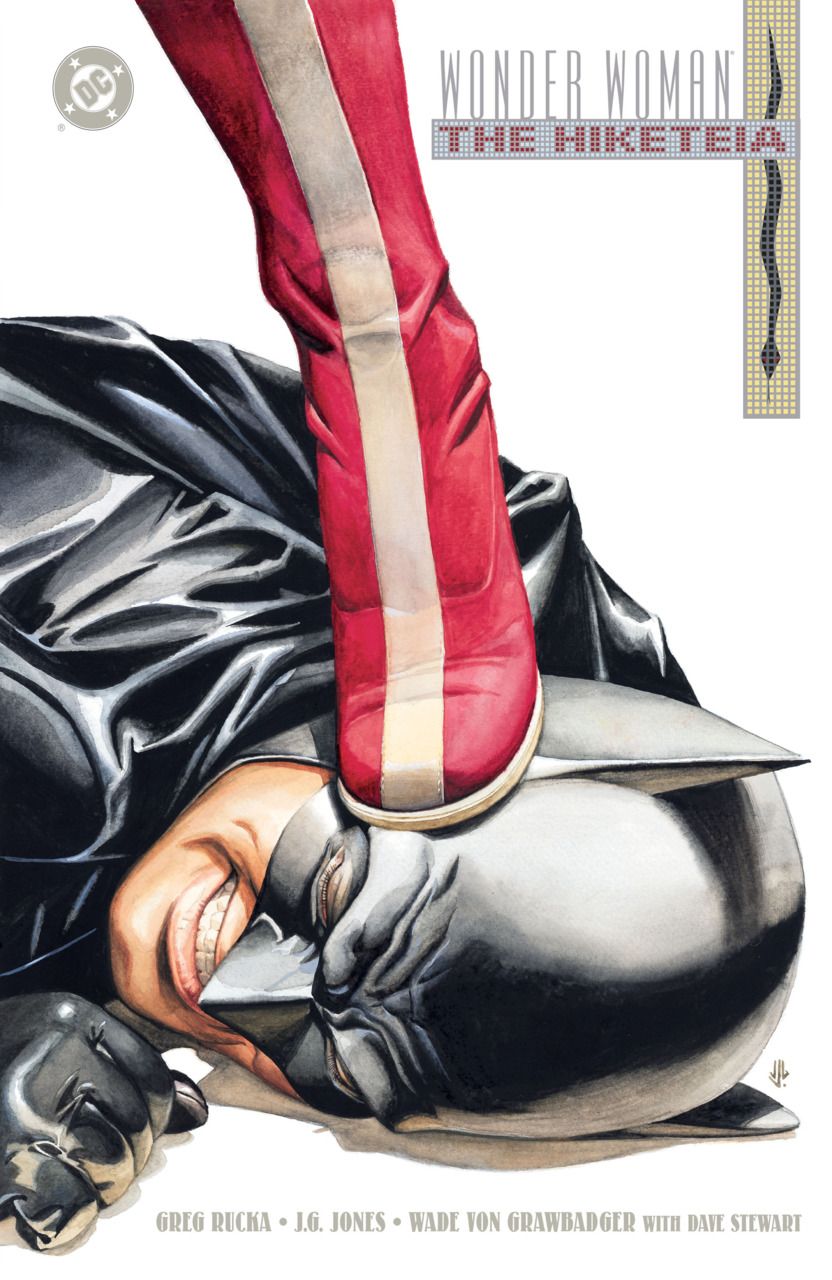
Of all the characters in the DC Universe, Wonder Woman may be among the most misunderstood and misconstrued. Part of the reason for this is that while Diana has iconic and archetypal power, she has not always been consistently defined as a character. Moreover, her portrayal over the past decade, starting with the death of Maxwell Lord and continued into some screen adaptations, has drifted away from who she has traditionally been. The main thing to understand about Wonder Woman is that she is a reluctant warrior who seeks peace above all else. She may be an Amazon warrior, but she typically kills only as a last resort; she prefers non-violence as a rule, but she is sometimes forced to fight to resolve conflict.
Greg Rucka, who wrote the death of Maxwell Lord, also wrote Wonder Woman: The Hiketeia, one of the most accessible and character-defining Wonder Woman stories ever published. Throughout his time on Wonder Woman, Rucka understood that Diana is a more interesting character when she faces moral conflict. Although she values truth and justice, she also believes in the Amazon code of honor, traditions that go back for thousands of years to ancient Greece. Rucka is well versed in history and Greek mythology, and he uses a Greek supplication ritual called hiketeia to set up this moral conflict. (As an aside, hiketeia is a real concept, having been featured in ancient Greek works such as Homer’s Iliad.) The premise is simple—a young woman is on the run, pursued by both Batman and the Furies for unrevealed reasons. She supplicates herself before Wonder Woman, an offer that Diana accepts. However, the truth has consequences, bringing Diana in conflict with Batman, pitting the Amazon code against her values as a heroine. The story is short and relatively simple, but it grapples with complex morality and issues of honor and ancient tradition.
You do not need to know anything prior to understand Wonder Woman: The Hiketeia. The story is set in Post-Crisis continuity, during Greg Rucka’s run prior to the death of Lord, when Diana acted as an official ambassador from Themiscyra. However, the story is written in such a way that you don’t need to know that; the story gives you what you need to know to understand it. There are no references to anything going on in the main Wonder Woman title, no other principal characters from any other DC titles, or any other major events. Batman is the only other major element of the DCU involved in this story, but there are no past stories referenced with him either. They are friends forced to fight each other because of circumstances and unwavering commitment to their personal codes, and that is all you need to know. Everything is perfectly self-contained and requires no outside reading or awareness of the character beyond what’s in the popular consciousness.
J.G. Jones delivered some outstanding art for many years, including some prior collaborations with Rucka. The Hiketeia may be some of his finest work in his career, and certainly his best work alongside Rucka. The references to Greek mythology are well researched and look accurate to the period. The design of the Furies, with their blood-soaked mouths and snakelike hair, is visually striking and fits the look and tone of Rucka’s Wonder Woman. The visual style, while not quite photorealistic, is detailed and generally lifelike while still maintaining a comic book aesthetic. His Diana is powerful and majestic, contrasting well with the grim and urban reality of Batman’s world, and yet it all feels like the same DC Universe.
The Hiketeia is the perfect starting point for Wonder Woman comics, even if all you know is the DCEU. The Diana in this book is consistent with the character from the Patty Jenkins films, with a tale that offers a nice blend of mythology and urban action. This story also centers on Wonder Woman’s core themes and values—truth, honor, and maintaining integrity in a society that’s not her own. The Hiketeia offers a short, simple, and coherent read, and it’s an easily digestible entry point into the life of Princess Diana of Themiscyra.
- Hulk: Gray (Jeph Loeb/Tim Sale)
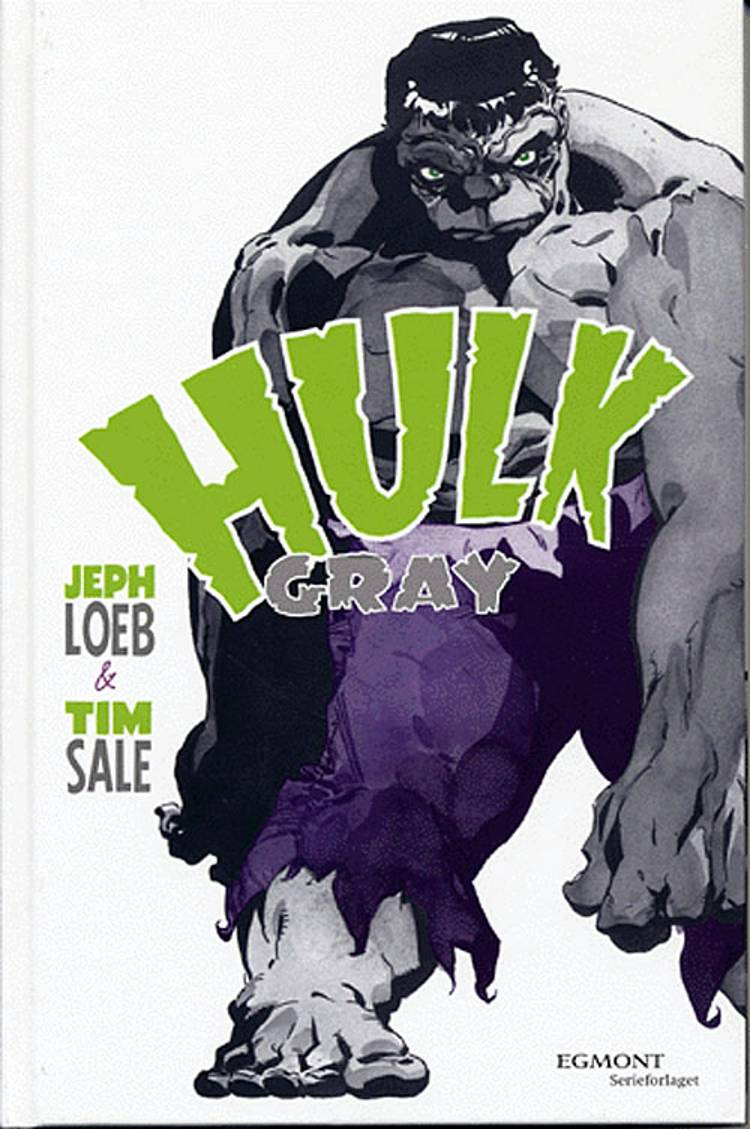
Although he doesn’t look it, the Incredible Hulk is one of the most complex characters at Marvel. He is so complex, in fact, that many of his own writers often seem to miss the point of the Hulk. Too many people tend to latch on to the original premise, with Banner searching for a “cure” to the monster within him. However, the truth of the character is much darker and deeper—the Hulk is a facet of Bruce Banner’s personality, the creation of years of physical and emotional abuse by his father. No adaptation, to date, has captured the true complexity of the mind of Bruce Banner, and so far, only the comics have grasped it well.
The two greatest runs on the character are Peter David’s run on Incredible Hulk and Al Ewing’s recent run on Immortal Hulk (set to end with #50). However, both of those runs are so long and complex that I can’t honestly recommend either as your very first Hulk comic. I would recommend reading the Peter David run first, because Immortal Hulk builds directly on concepts created there. Fortunately, there is a much better entryway into the Hulk for new readers, one that starts simple while grasping Banner’s psychology, and that is Hulk: Gray.
Hulk: Gray is one of the “color” themed books by writer Jeph Loeb and artist Tim Sale, best known for Batman: The Long Halloween. Loeb and Sale are well known for doing “Year One” style books together, both for DC and for Marvel. At Marvel, they are known as the “Color” books, including Daredevil: Yellow, Spider-Man: Blue, and Captain America: White. Hulk: Gray is a story set within the first two days of the creation of the Hulk, when Dr. Bruce Banner was struck by the gamma bomb that he invented. At that time, the Hulk was gray rather than green, a Hulk incarnation who would later be known as “Joe Fixit”. This story is told mostly in flashback, as Banner confides to his psychologist, Leonard Samson, about what happened during that time.
The reason this story works is that it covers the complexity of the Hulk while remaining true to the early status quo of the classic Hulk comics. Loeb and Sale focus on the basics of the Hulk—he behaves like the green Savage Hulk, while also coming out only at night as Fixit does. At the same time, they acknowledge that the Hulk is a part of Bruce Banner, not a separate entity that needs to be “cured”. The classic supporting cast is also used quite well, focusing on Banner/Hulk’s romance with Betty, his friendship with Rick Jones, and his antagonism with General “Thunderbolt” Ross. At the same time, Gray introduces new wrinkles in the Hulk’s history in a way that feels natural and consistent with the early stories.
Hulk: Gray isn’t perfect, and it is eclipsed by the far superior David and Ewing runs. It also sweeps some of the interesting early material in the Lee/Kirby Hulk stories under the rug, which helped to inspire the Peter David run. At the same time, it’s accessible, it asks for no required reading, and it’s a solid Hulk story that grasps the character basics. Loeb and Sale generally deliver good, accessible stories featuring classic characters, but this one is the best entry point into the Hulk.
- Captain America: Operation Rebirth and Man Without A Country (Mark Waid/Ron Garney)
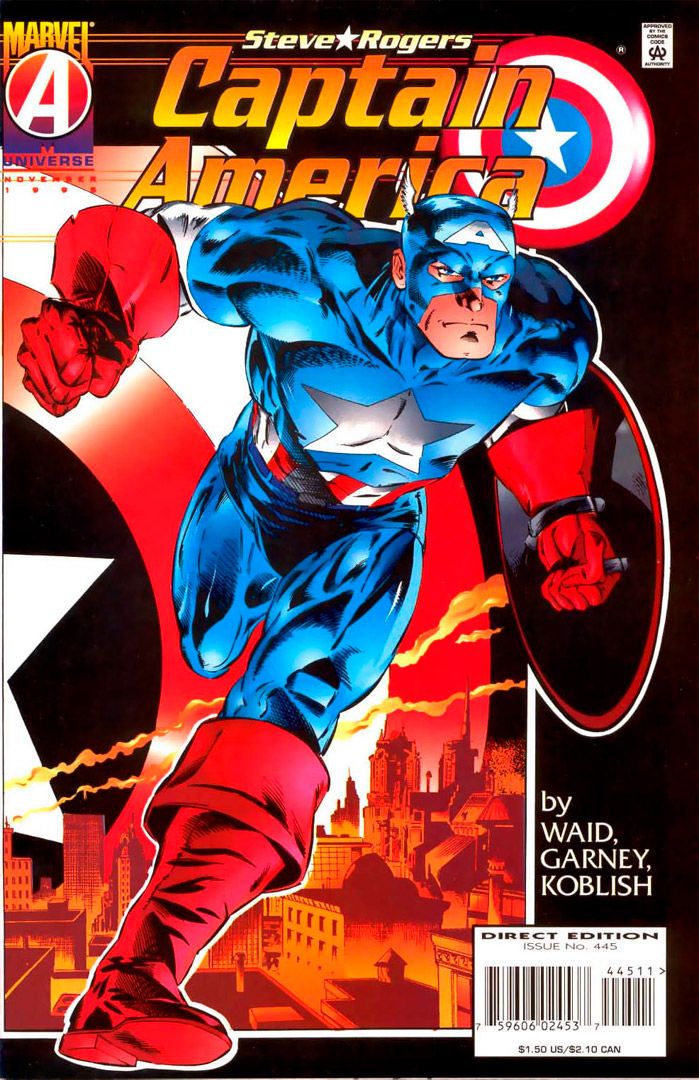
Mark Waid has made his mark on many characters from the Big Two—Daredevil, the Fantastic Four, and the Flash, among others. However, there is one other character that he is well known for: Captain America. In fact, Waid wrote three runs on the character, which is rare for any comics writer. For our purposes, though, we will discuss Waid’s first run, beautifully illustrated by Ron Garney. This covers two complete story arcs: “Operation Rebirth” and “Man Without a Country”. These stories have been collected together in reprints, and so are worth covering as a whole.
One of Waid’s strengths is in telling stories that build on the past while also making it easy for new readers to understand. Mark Gruenwald, the previous writer at the time, wrote what I consider to be the greatest run on Captain America. However, Gru’s run had its faults, and he didn’t tie every loose end when he departed. At the time, Steve Rogers was left in a deathlike coma, his body drained of the Super-Soldier Serum and left powerless. Waid addresses this in a way that makes sense, explaining what he needs to, while not requiring anyone to have read Gruenwald beforehand. The situation even creates an unexpected alliance for a time between Steve Rogers and his arch-nemesis, the Red Skull, throwing a unique wrinkle into their relationship for a time.
As for the stories themselves, Waid approaches them as a high-octane action series, with elements of old-school Tom Clancy. The book has elements of political intrigue, but mostly the stories revolved around Captain America fighting classic villains alongside Sharon Carter. Those familiar with Captain America: The Winter Soldier may find parallels with the storytelling style, if not the comic book elements introduced by Ed Brubaker later. Like that film, Cap is largely a man on the run during Waid’s tenure, a righteous man trying to prove his bonafides while attempting to expose evil conspiracies undermining his country. Waid often excelled with character dynamics between two main characters, and Cap’s relationship with the jaded and cynical Sharon clicked well. The dialogue was always sharp during this run, another Waid signature, making this Cap run entertaining as well as action-packed. Still, there were breather moments that focused on character, especially in the last issue, which focuses on Sharon’s dark past while she was presumed dead. Waid’s Cap was the symbol of the nation’s ideals, but it confronted the dark side of its government when necessary.
Ron Garney contributed a great deal to the look of Captain America. His Steve Rogers was heroic and physically imposing, always a larger-than-life figure in or out of the uniform. Garney’s visual storytelling was also striking, very good at moving the story between panels. He was always a good action artist as well, while also getting across the superheroic elements. Garney was always one of Waid’s best collaborators on this title, and he’s only grown as an artist since.
Waid’s first run ended when the main Marvel titles moved into Heroes Reborn, an experiment where Jim Lee and Rob Liefeld attempted to “reboot” several Marvel characters. Captain America was a part of this, so the run came to an end. Still, Waid returned to the title later with “Heroes Return”, though that run didn’t quite live up to the first. He also would come back many years later, alongside Chris Samnee. Still, the first Waid run remains the best, mainly because of how simple and effective the writing and art were on the title.
- Punisher: Welcome Back, Frank (Garth Ennis/Steve Dillon)
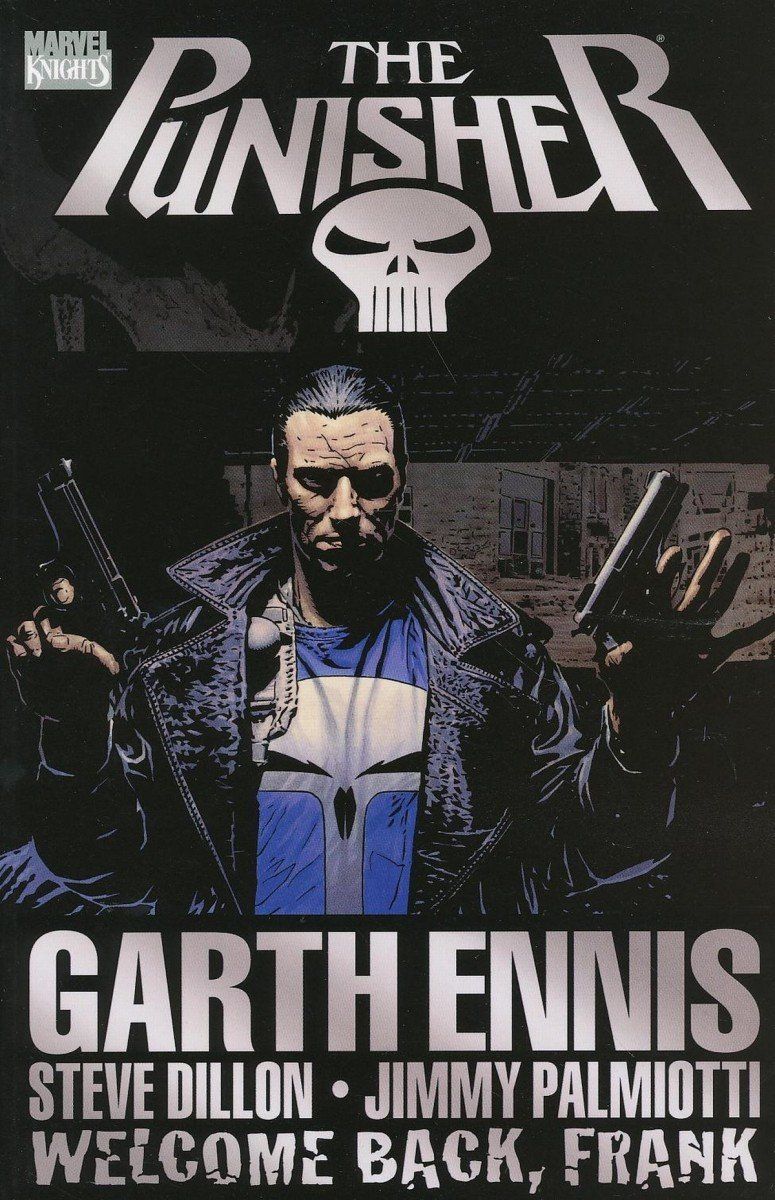
Garth Ennis is, without question, the definitive writer on the Punisher. Although some adaptations have come close, most recently the Netflix show, Ennis tapped into the primal force of the character in a way no one else has. Although driven by the deaths of his family, Ennis envisioned Frank Castle as a man who killed criminals because he took satisfaction from it. Although limited by the age restriction on content, Ennis got past this by taking a blackly comedic take on it.
There were also other concerns as well. At the time Ennis took over the book, Frank Castle had become a supernatural being; an experiment with the character that failed. Ennis took Punisher back to basics in a very simple way, restoring Castle to life as the man he was, explaining it succinctly in only a few panels. Ennis writes the story so deftly that you don’t need to know anything prior to understand “Welcome Back, Frank”. All you need to know is that Frank Castle is on a mission to exterminate a crime ring run by the vicious Ma Gnucci, dispatching mobsters and copycat Punishers along the way. The book is also darkly entertaining, as Punisher finds clever ways of killing people, including the use of polar bears. If you enjoy the kind of dark humor Ennis employs on The Boys, then you’ll enjoy his Punisher as well.
This run is also notable because it was illustrated by the late, great Steve Dillon, Garth Ennis’s best collaborator. Ennis and Dillon had worked on Vertigo titles up to this point, including John Constantine: Hellblazer and Preacher. They are every bit as good on “Welcome Back Frank”, with Dillon often contributing to the approach of the book. Part of this is that Dillon grasped Ennis’s dark and twisted sense of humor, translating it to the page in ways few artists were able to.
Ennis and Dillon would continue to work together on Punisher after this, primarily on the Marvel Knights Punisher ongoing title. However, Ennis’s true renaissance on the Punisher would happen after the conclusion of that title, and sadly, after the departure of Steve Dillon. Punisher MAX remains to this day the greatest take on the character, though it took “Welcome Back, Frank” to set the stage for that future greatness.
- Shazam and the Monster Society of Evil (Jeff Smith)
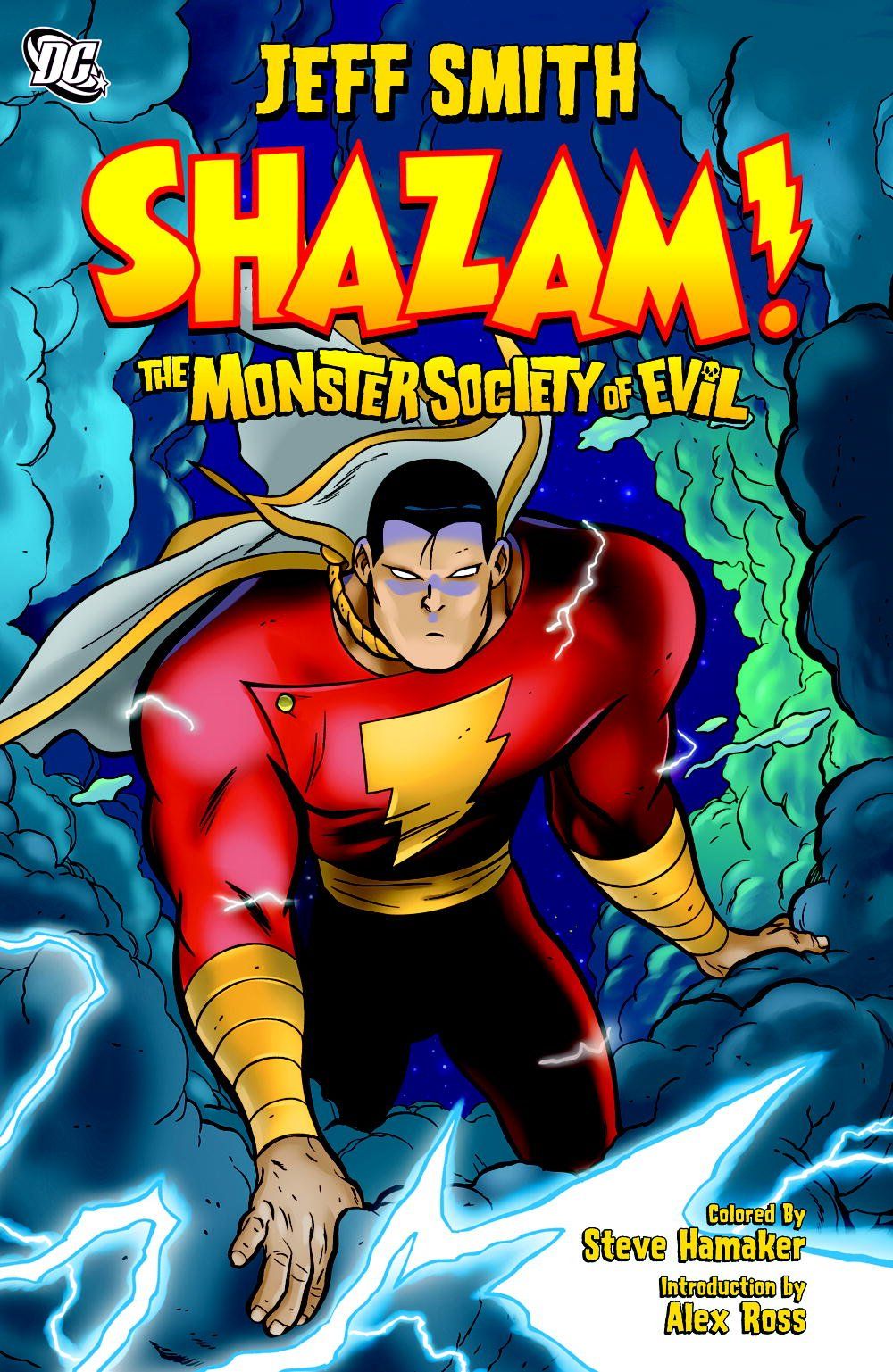
The Shazam franchise is one that has struggled in recent years, despite the relative success of the recent film and its upcoming sequel. This is particularly true of the comics, where the New 52 reboot completely changed the character from the one that his core fandom recognized. Still, there are good Captain Marvel comics even though most of DC’s offerings haven’t lived up to that promise.
Oddly enough, many of the best and most faithful Captain Marvel stories in the past two decades have been stories set outside of DC continuity. Because of this, you can read these stories without any prior knowledge of Captain Marvel, even if all you know is the movie version. One of these is Shazam and the Monster Society of Evil, written and illustrated by Jeff Smith, best known for Bone.
Shazam and the Monster Society of Evil is a reinvention of classic Captain Marvel, though a less drastic one than New 52 Shazam. Billy Batson is a modernized character, but still fundamentally the same as the original version—he is a pure-hearted young boy who chooses the path of heroism despite living on the streets. Because of his purity, he earns the power of the wizard Shazam, drawing on six divine patrons that transform him into Captain Marvel. This version of Captain Marvel is somewhat different in the interpretation, but he is recognizable as the classic character in his powers and behavior. Mary Marvel is interpreted a bit differently from the classic Fawcett version, though she has a defined and likeable personality in this series. The villains and supporting characters are drawn from the Fawcett canon as well, maintaining the whimsical charm of the original comics.
Smith’s art is also quite impressive in Monster Society of Evil. The visual style of the book is respectful to the classic Fawcett comics, while also bringing a modern style to Captain Marvel. The Captain himself looks powerful and imposing, while also very childlike in his mannerisms. The visual characterization is on point, with characters showing a wide range of expressions appropriate to the story. Even the non-human characters like Tawky Tawny show believable emotions in their faces and nonverbal behavior. At the same time, while the book is designed to be kid-friendly, it is accessible to adults and offers something to every audience.
If you want to read a good Captain Marvel comic, Shazam and the Monster Society of Evil is a good starting point. It shows a workable version of the character’s origin, and it captures the sense of wonder of the Fawcett books without requiring any previous history. This book stands alongside Jerry Ordway’s Power of Shazam, Grant Morrison’s Thunderworld Comics, and Parker and Shaner’s Convergence: Shazam as good, accessible Captain Marvel stories.
- Marvels (Kurt Busiek/Alex Ross)
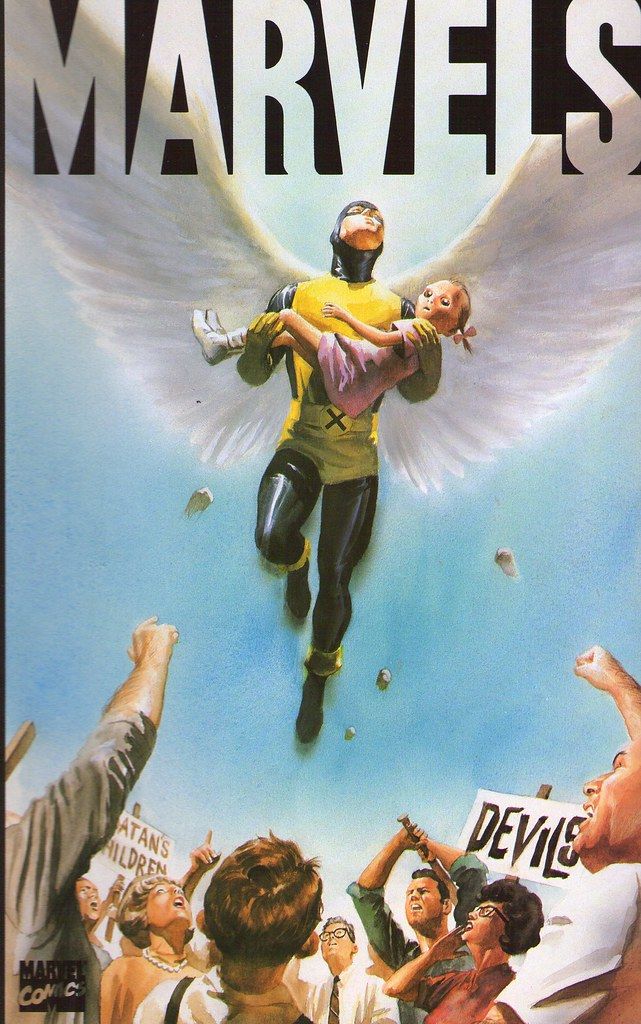
Where some of the previous titles succeed as introductions to individual characters, Marvels is a good general walkthrough of the Marvel Universe as a whole. Marvels was the book that sparked the careers of Kurt Busiek, who went on to write a memorable run on Avengers, and Alex Ross, who went on to create another classic, Kingdom Come, for DC. Marvels is a ground-level introduction of early Marvel history, as seen by a reporter named Phil Sheldon, who witnessed and documented the events.
Phil Sheldon is a good viewpoint character, and his perspective allows the reader to experience the early days of the Marvel Universe as he would. Many of the events are snapshots of stories that took place in classic Marvel titles, including the Fantastic Four, the Avengers, the X-Men and Spider-Man. At the same time, the book is written in a way that does not require you to have read any of those classic stories, even though the book is impressively researched and documented. But in the end, the focus of the story is on Sheldon, and how he reacts to the superhero battles raging around him. He is a deeply human character, reflecting the feelings of his time with his faith in the Marvels. He also shows a clear character arc as that faith is shaken and then rewarded.
The work of Alex Ross is an important cornerstone of this series. Although Ross’s work would grow significantly since this time, his early Marvels work still has that photorealistic feel that make the heroes seem alive. The painted interior work captures the heroic stature of all the major Marvel characters, but also the humanity that Stan Lee gave them. The pages look like the classic Kirby comics brought to life, even inspiring some of the casting choices in the films that debuted after Marvel released. Busiek and Ross have always had a good creative chemistry, continuing into Astro City, but this series shows the spark of that growth. They would later do an epilogue addition, focusing on the All-New, All-Different X-Men of the Bronze Age, which is every bit as good as the main Marvels title if not better.
If you want a book that gives you the essentials of the Marvel Universe, while not feeling like a history lesson, Marvels is that book. While Marvels generally ends towards the start of the Bronze Age, it will give you the basic foundation of what the universe is and who the major characters are, as well as references to look up if you want to track down the original comics. It also offers a good, self-contained story that should be understandable on its own merits. It’s a good ground-floor story if you want to see what the wider tapestry of Silver Age Marvel is, and that has value for a newcomer.
- DC: The New Frontier (Darwyn Cooke)
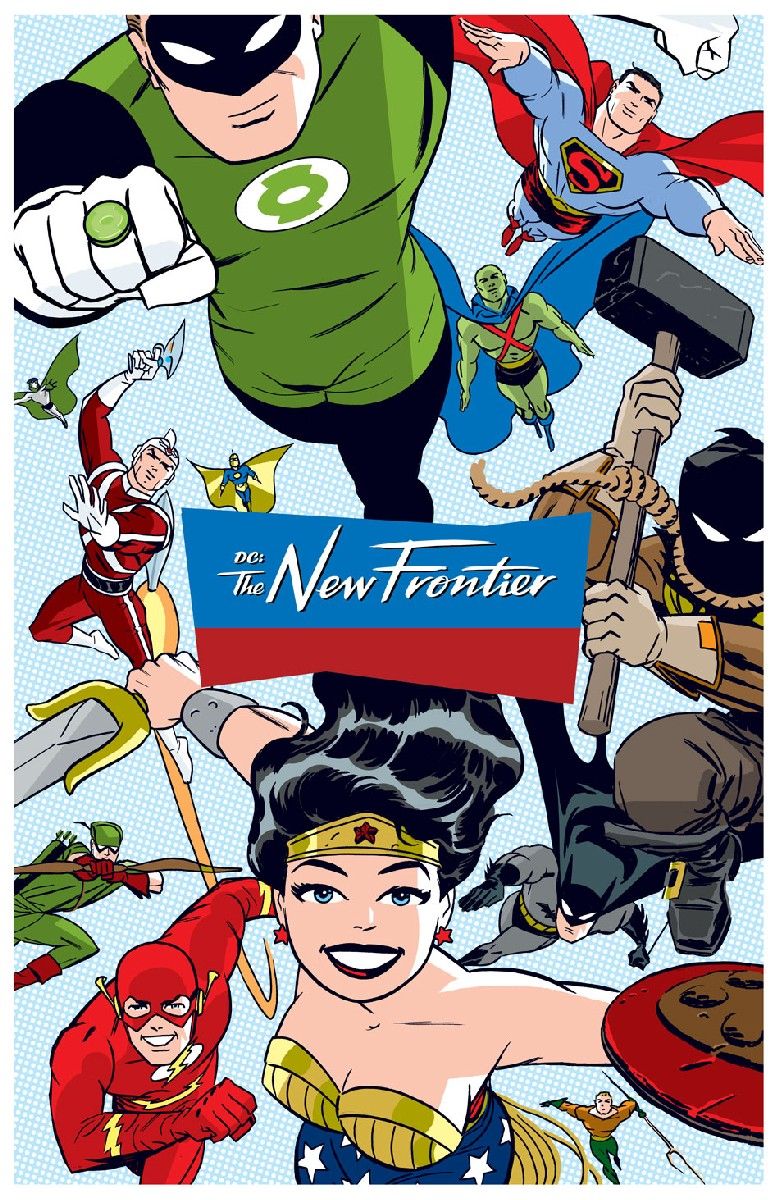
DC: The New Frontier is one of my favorite DC comic stories of all time. This is even more remarkable because this story is relatively recent by comic book standards; it only came out in 2004. At a time when DC was shifting towards darkness and deconstructionism, Darwyn Cooke presented quite possibly the definitive reconstructionist take of the DC Universe. The only book to exceed New Frontier in that respect is the next book on the list.
Like Shazam and the Monster Society of Evil, New Frontier exists in its own continuity and is not part of the main DC continuity. There is no required reading to enjoy this book, and Darwyn Cooke gives you everything you need to know to understand the comic. Cooke reimagines certain things, but at its heart, New Frontier is a classic DC comic that honors the Silver Age while bringing it into the 21st Century. There is a clear progression of events, moving from World War II to the retirement of the Justice Society, and ultimately showing how the Justice League is founded. It is a coherent take on the DC Universe that respects what each of the characters is about. Moreover, it honors the spirit of what the DC Universe has classically been—bright, hopeful, and inspirational.
At the same time, New Frontier is not merely a nostalgia trip, or looking at the past with rose-colored goggles. Cooke understands that the 1960’s had serious social problems, and he addresses many of those issues in his narrative. He even introduces an African-American hero, presumably based on John Henry Irons, and his story does not end on a happy note. The story also addresses government conspiracies, Cold War fears, and other issues. Darwyn Cooke was fascinated by the past, embraced the ideals of the Silver Age, but he also spoke out against its problems as well.
Moreover, Cooke does for the DC characters what Marvels does for the Marvel Universe. Although he does not use a main viewpoint character, he squares firmly on the human element of the iconic heroes that he’s writing. Barry Allen struggles with self-doubt that he overcomes later. Hal Jordan is overcoming PTSD that he suffered at the end of the Korean War, finally coming to terms with it as he becomes a Green Lantern. J’onn J’onzz starts out as an alien who lost his world, but who embraces his new planet as its protector. Darwyn Cooke embraces these characters, often dismissed by modern audiences, and makes them work while embracing their Silver Age characterization.
Comics lost a great visual storyteller with Darwyn Cooke’s passing. He made the DC heroes look like the bright, shining icons that they’ve always been, and he did so unapologetically. He inspired many artists that have picked up his brush since, continuing the style he began. Cooke was a comic book legend, and DC: The New Frontier remains a masterwork that reminds us what the DC Universe should be.
- Batman: Year One (Frank Miller/Dave Mazzuchelli)
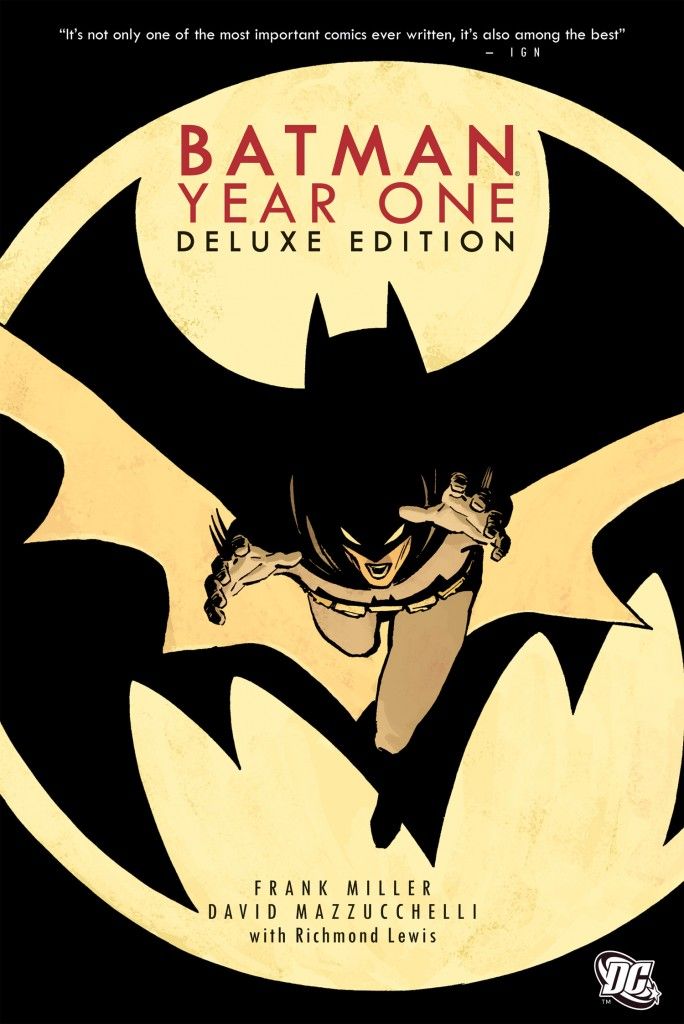
There was a time when Frank Miller was one of the greatest writer/artists working in the medium. His run on Daredevil revitalized the character at a time when he was dismissed as a B-stringer. His work on the Wolverine mini-series likewise struck gold, delivering another character-defining story at Marvel. However, he was only getting started, as his best-remembered work was yet to come, as Miller went to DC to tackle the Dark Knight.
Many people revere Batman: The Dark Knight Returns, but Batman: Year One is probably Miller’s most enduring work on the character. Where DKR was a social commentary on the excesses of the 1980’s, Year One is a timeless story that still works today. This story was also designed to be an accessible starting point for Batman, having been written in the aftermath of Crisis on Infinite Earths. Much like John Byrne’s Man of Steel or George Perez’s opening arc on Wonder Woman, Miller began with a clean slate to tell his own Batman story. There are no ancillary characters, no Robins, and none of the typical rogues gallery members aside from Catwoman. Instead, Miller told a noirish crime story about Batman and James Gordon as they struggle against crime and corruption in Gotham City. It revisits Batman’s origin, but it doesn’t obsess over the deaths of the Waynes as many modern Batman adaptations do. The result is a story that still works decades after it was written, and it is the perfect introduction for anyone who has never read a Batman comic before.
Although Miller is an excellent artist in his own right, the art of Dave Mazzuchelli creates so much of the atmosphere of Batman: Year One. This was not their first work together, having worked together on the legendary Daredevil: Born Again, but this may be their best remembered collaboration. The streets of Gotham are grimy, smoky, and run-down, much as you’d expect of a comparable city of that size. The use of negative space and shadow is well handled, making Batman look mysterious and threatening against the darkness. There’s a hardened realism in Mazzuchelli’s Gotham City, but his Batman looks larger than life and mythic. That contrast feels natural on the page, making Batman look more like an urban legend in contrast to the city around him.
This is not to say that Year One is perfect, as there are some issues with it. Miller’s version of Catwoman is not the best, descending into his more regrettable tropes with his female characters. Still, this is perhaps the most influential Batman story, both in comics and in screen versions; Christopher Nolan’s Batman Begins and Mask of the Phantasm both borrow elements of Year One. This book is required Batman reading on its own merits, but it is also possibly the most accessible Batman story for the uninitiated.
- All-Star Superman (Grant Morrison/Frank Quitely)
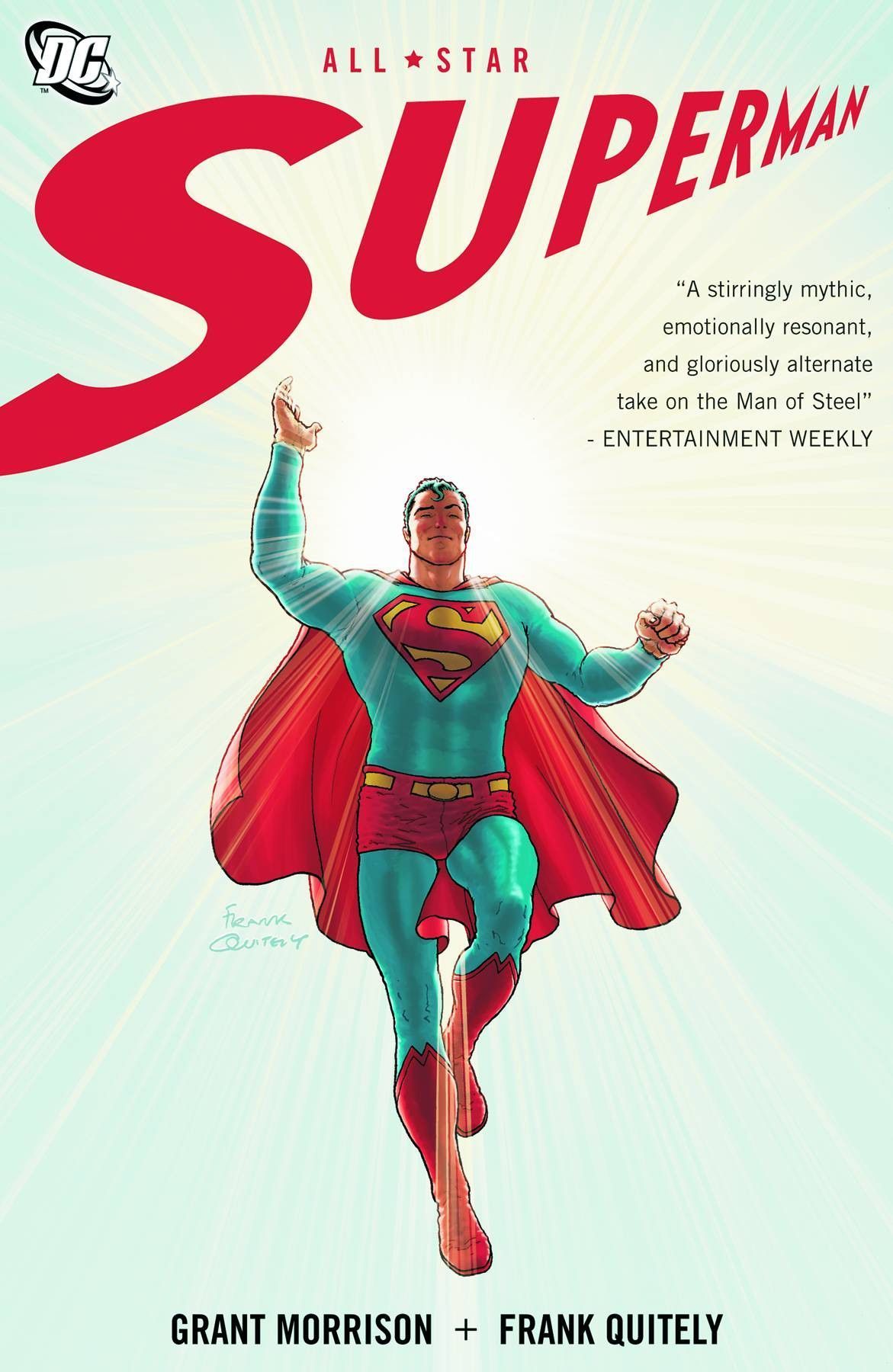
Watchmen may be comics’ technical masterpiece, but All-Star Superman is perhaps my favorite DC comic ever made. It is a work of comics craftsmanship that may come closest to rivaling Watchmen, but it embraces the optimism and everything else great about superhero comics. Moreover, All-Star Superman offers very possibly the definitive statement on the character of Superman, incorporating elements from across his entire history. Grant Morrison and Frank Quitely are a legendary creative team, but this is unquestionably their masterpiece.
This comic is also extremely accessible, set off in its own universe and not a part of mainstream DC continuity. At the same time, much of its accessibility comes from how brilliantly crafted it is. Grant Morrison and Frank Quitely manage to encapsulate Superman’s origin in four panels and eight words total: “Doomed planet. Desperate scientists. Last hope. Kindly couple.” There’s nothing more you need to know after that, and all of this is on the first page of the book. Morrison and Quitely respect the audience’s knowledge and intelligence, understanding that most people know the basic details of who Superman is. With that done, they simply move on to telling their story. I’ve never seen a comic before or since that establishes basic character information with that level of simplicity and economy.
The story itself is epic, crossing the length of Superman’s mythos while also developing Morrison’s own concepts. The core premise is that, in saving a manned ship to the Sun, Superman becomes overexposed to too much solar energy, killing him from within. In the waning days of Superman’s life, Superman must perform a series of Herculean labors, culminating with a battle with Solaris the Tyrant Sun and a final battle with Lex Luthor. Much of the story also revolves around Superman’s relationship with Lois, throwing new wrinkles into their romance while keeping true to what came before. Moreover, it shows Superman at his kindest, most compassionate, and most heroic, while also giving Superman challenges and human vulnerability. One iconic scene particularly captures Superman’s love of humanity, as he gives comfort to a suicidal young girl. The conclusion is emotionally powerful and satisfying, giving the character a resolution that’s worthy of Superman.
Frank Quitely is the perfect complement to Morrison on art duties, and I can’t imagine anyone else doing half as well on this series. His character depictions had noticeably improved by the time he did All-Star Superman, to the point that many of his covers on this book have become iconic. Quitely was already an impressive visual storyteller, but All-Star features much of his best work. Much of the strength of his work lies in the small details, some of which are barely noticeable even after repeated readings, but they are powerful when the realization hits. The visual style is a perfect fit for Superman, capturing the old-school charm of the character while adding a modern touch. Everything is well referenced, especially the Easter eggs that call back classic Superman stories, but the story never requires you to know what any of them are to understand what’s happening. All-Star Superman is an intricate piece of work on a visual level, offering much to think about even after reading it repeatedly.
I consider All-Star Superman to be a must-read for anyone interested in Superman as he’s traditionally portrayed. It’s a book that captures the core of what Superman is about as a series, successfully challenging much of the conventional wisdom about him. At the same time, it is extremely readable as a first Superman comic. If there’s a downside with starting with this book, it’s that it sets an impressively high standard for other books to follow.
Honorable Mentions
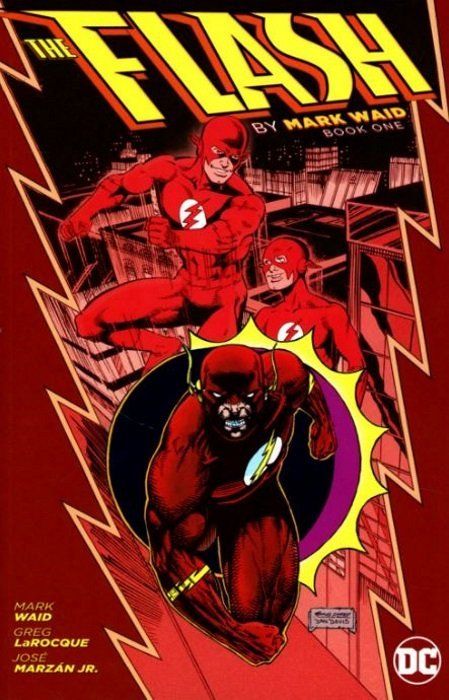
Some books I omitted from this list simply because I’ve already talked about them extensively. Three bonus picks that I have already discussed in depth in previous articles include Daredevil: The Man Without Fear, X-Men: God Loves, Man Kills, and the Wolverine limited series. You can find my take on Daredevil: The Man Without Fear in my Devil’s Advocate column on that series, and the X-Men and Wolverine stories were both covered as part of my Claremont’s X-Men Retrospective. Since I’ve written about them extensively in those columns, I’ll simply refer you there. All of these stories are extremely accessible stories, not very long, and will introduce you to the core of those characters without requiring any outside reading. I strongly recommend all of them if you’re a first-time reader.
I thought about mentioning Invincible on this list, and part of me wanted to. Fans of the Amazon animated version of Invincible should have an easy time of getting into the original comic. Everything you love from the animated series is in the book. Moreover, you don’t need to know anything about Invincible outside of the main series at all. That said, I decided against its inclusion because Invincible tends to reward readers who already have a good grasp of how the superhero genre works; it’s a series that subverts standard superhero tropes quite often. Still, I highly recommend reading Invincible, and it’s possible you could come in completely cold and still enjoy it.
I was very close to including Flash: Born To Run, by Mark Waid and Greg Larocque. It’s a good story if you want to get into the Flash, and especially if you’re interested in the Wally West version of the Flash. Ultimately, I decided against it… “Born to Run” is an accessible starting point and it’s self-contained. But it’s also a bit slow as superhero stories go, focusing more on Wally’s origin and his family problems than on superheroics. The art is also not as good as other books on the final list. Also, it might be a good idea to read Wally’s adventures as Kid Flash before seeing how Wally matures into a seasoned adult hero. That said, I definitely recommend Born to Run (which is included in DC’s first “Flash by Mark Waid” collection), as it sets up Wally’s character quite well.
Watchmen is held up by many as the greatest graphic novel ever made, having received honors even from mainstream publications. It is also a highly influential work, very often for the wrong reasons. I personally love Watchmen, and I think it is a must-read series. However, I would recommend getting a firm grasp on the superhero formula before trying Watchmen. Firstly, it is an experimental book that attempts difficult things with the craft, things that even today haven’t been surpassed. Moore wrote the series with the idea of challenging the industry to improve its craft, but Watchmen instead became remembered for its deconstructive tropes. It is unfortunately an extremely misunderstood book, even by professional writers, artists, and filmmakers. Because of this, I’d suggest working your way up to Watchmen, rather than starting out with it. Still, if you want a challenge, Watchmen will definitely provide you with one.
Some books I left out just to offer more variety in character selections. The Long Halloween is a popular choice, but Year One is simply a better self-contained Batman story, in my view. There are many great Superman stories I could have included, including Superman for All Seasons, Superman: Birthright, Byrne’s Man of Steel, and Superman: Secret Origin, but All-Star Superman is still unequalled for me. Even so, I would recommend all of those if you want a good grounding in those characters.
Also be aware there are many amazing stories that you shouldn’t read as a first comic. The Dark Phoenix Saga is perhaps the greatest X-Men story ever made, and yet I would never recommend it without reading the Claremont and Byrne issues that led up to it. Avengers Forever is an outstanding story, and it established ideas that have been used in Loki, but it’s also a deep dive into Avengers history. Judas Contract is a classic and character-defining story for the Teen Titans, but it works much better if you experience the buildup leading to that story.
But in the end, read what you enjoy and what appeals to you most. If you want a suggestion as to where to go after reading these stories, you may want to find and track down the definitive runs on the characters you like most and go with those. You can also find information online; character histories are often available even on sites like Wikipedia, and there are always runs that stand out on every major successful series. Seek out characters that interest you and look for the writers and artists that you enjoy the most, and you likely shouldn’t go too far wrong.
Author Profile
- Steve Sellers had been a fan of superheroes ever since Superman: The Movie. But it took the JSA, the Legion of Super-Heroes, Dragonlance, Lord of the Rings, Twilight Zone, and Chris Claremont's legendary run on the X-Men to make him a writer and a longtime fan of comics, fantasy, and science fiction. Steve is the co-creator of WHITE DRUID & MICHAEL NERO and GUARDIANS OF ELAYIM for Omen Comics, and he is also the creator of BLITZ and SHOCKWAVE for Revelation Comics (an imprint of Omen Comics).

